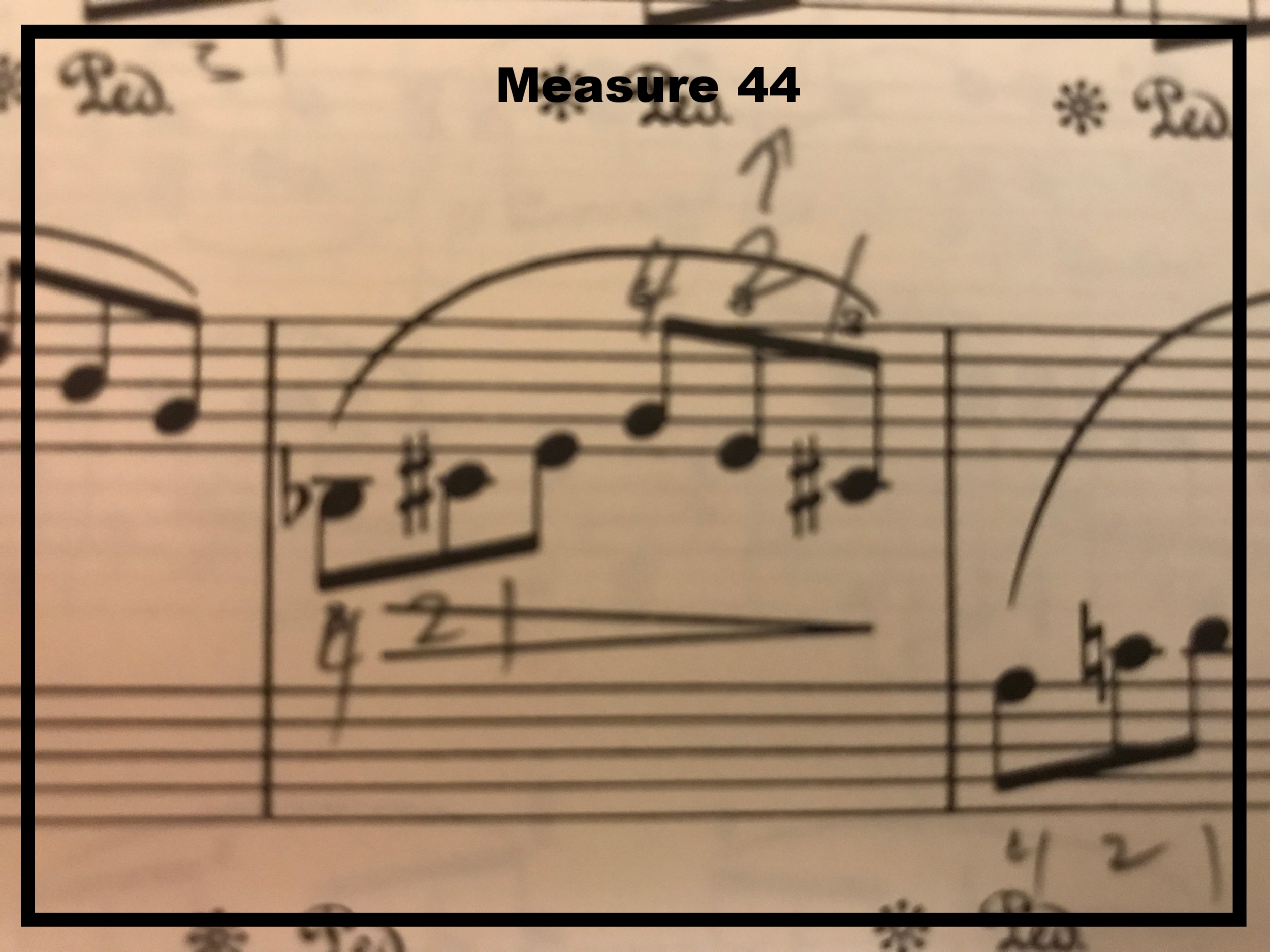Here is a reference guide for those working on this piece. Images of the individual measures can be found in the gallery below.
Measure 3, 19, 51 - You need to be more inside to play the F# in the left hand comfortably.
Measures 4-5 & 20-21 - A redistribution of the line between the right and left hand make this easier to play. The 3rd note of the first triplet is played by the right hand instead of the left.
Measures 9-10 & 25-26 - Here a redistribution of the 2nd and 3rd note of the first triplet to the right hand allow for the thumbs to be uncrossed.
Measure 16 - Start the triplet figure more inside so that the left thumb can play the A# comfortably without twisting.
Measure 42 - Here both hands need to be inside causing a slight collision of the hands. If you move the left hand out of the way the right hand can play inside more comfortably.
Measure 44 - The right hand needs to move inside so that the right thumb can play C#.





